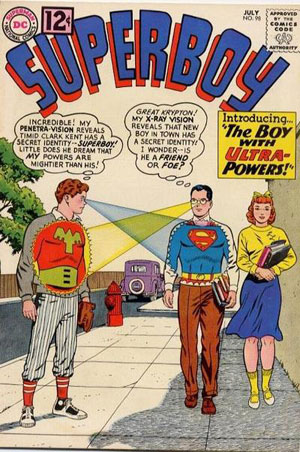The Science of X-Ray Vision
One of the fun things about comic book superpowers is trying to figure out how they’d really work… and why they really would never work at all.
So how does Superman do it! He can see through buildings and clothing (he checks out Lois Lane’s underwear in Superman 1 – more on this later). Many have attempted to answer this question of the ages yet few have explored this in as much depth as J.B. Pittenger who published a study in the journal Perception back in the stone ages (1983) entitled “On the plausibility of Superman’s x-ray vision.”
So why would someone go to all the trouble of finding out why X-ray vision could never work the way it does in the comics? It’s less about advancing the cause of science and more about educating students about their own vision:
The contrast between human vision and Superman’s x-ray vision can be useful in helping students understand the importance to vision of the physical nature of light and its interaction with the air and objects in the environment.
Human vision has evolved to make use of several physical properties of ‘visible’ light: over short distances it passes largely unchanged through air, thus making air nearly invisible’ it is reflected by most surfaces in the environment, thus allowing them to be visible’ and the reflection is only partial, thus structuring the light so as to provide information to the perceiver.
I’ve always found myself a bit irritated by pop-science books that purport to explain “the science of super-heroes” or “the science of Harry Potter” or “the science of this-that-and-the-other” — but they’re actually considered good things among a number of scientists who know that their real purpose is to get younger readers interested in science.

